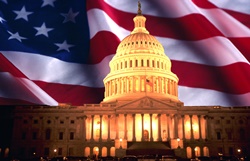A bipartisan agreement has been reached in the Senate to help stabilize health care markets – from Senate Health, Education, Labor and Pensions Committee Chairman Sen. Lamar Alexander (R-TN) and ranking member Sen. Patty Murray (D-WA).
 Among other things, the Alexander-Murray agreement would:
Among other things, the Alexander-Murray agreement would:
- fund cost-sharing reduction payments, which help lower consumers’ deductibles and co-pays, for two years;
- broaden the pool eligible for a “copper plan” (catastrophic medical) coverage option, which would help reduce the mandate implications for essential benefits;
- include funding to help Americans navigate signing up for health insurance, which had been cut by the Trump administration; and
- set up high-risk pools that will allow for continued coverage for these individuals.
What this is not is a “repeal and replace”. That said, the two-year funding promise is good news for insurers and would help alleviate their unease, which would also be felt by consumers. But this bill does nothing to address the core problems in the individual marketplace that threaten its sustainability.
Indiana Sen. Joe Donnelly, who has been pushing for bipartisan fixes to the Affordable Care Act (ACA), has thrown his support behind the Alexander-Murray agreement and is a co-sponsor of the legislation. He stated, “This is the product of hard work from members on both sides of the aisle, and it’s an important step in providing much needed stability to the market. I’m proud to be part of the effort, and I will continue working with Republicans and Democrats to move this much-needed legislation forward.”
President Trump has alternately met the agreement with both optimism and skepticism. Overall, he’s indicated that he would favor a short-term subsidy fix; however, he doesn’t want to help insurers either.
It would appear the bipartisan legislation would garner most, if not all, Senate Democrat votes (as Minority Leader Chuck Schumer alluded to on Thursday), so that would leave a lot of wiggle room for passage if some, or even many, Republicans vote against it. The question is what Senate Majority Leader Mitch McConnell will do and what he says to his caucus.
Meanwhile, Sens. Bill Cassidy (R-LA) and Lindsey Graham (R-SC), the authors of the Senate’s second ACA reform attempt, have been working with Alexander and Murray on ways the bill can be made palatable to the very conservative arm of the congressional Republicans – most notably in the House.
In other words, this is far from a done deal.

 The U.S. House of Representatives was on a week-long recess, which means our delegation was back home and visiting with their constituents around the state. The Senate, however, remained in D.C. working. Both will continue on the job in Washington starting next week until their recess around Memorial Day. A few news and notes:
The U.S. House of Representatives was on a week-long recess, which means our delegation was back home and visiting with their constituents around the state. The Senate, however, remained in D.C. working. Both will continue on the job in Washington starting next week until their recess around Memorial Day. A few news and notes: President Trump’s number of executive orders has now topped 30; a look at the latest that occurred during the week:
President Trump’s number of executive orders has now topped 30; a look at the latest that occurred during the week:
 Finally! The long-sought approval for the Keystone XL oil pipeline is
Finally! The long-sought approval for the Keystone XL oil pipeline is 




